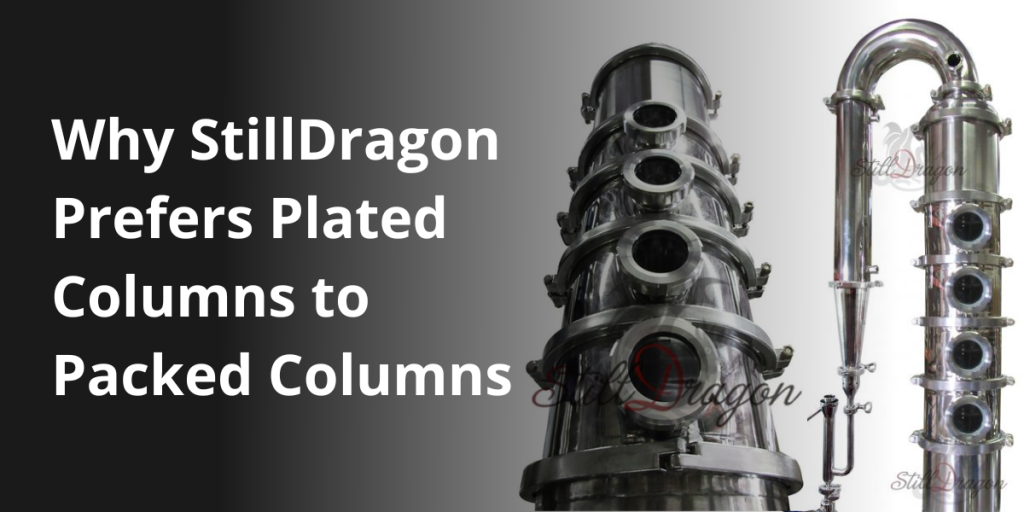Why StillDragon Prefers Plated Columns to Packed Columns

Quite often, we have been asked about mixing different distillation mediums, the differences and whether or not to install a copper packing material with plate sections in your vodka still column? Truthfully, a hybrid solution can help a small startup distillery save money on equipment, and it could help save the valuable ceiling height typically preferred to run a “proper” vodka still column. However, StillDragon prefers the consistency, ease of use, and predictable energy costs that come with a plated reflux column.
Packed columns have many advantages, especially because they may have more distillation cycles per run, but it definitely comes with its downfalls. When the packed column is taken apart, not only do you run the risk of possibly losing some of the copper packing (this is typically seen with unstructured packing), but the finished product can be altered if the packing doesn’t go back exactly where it was. There’s also a factor of weight that comes along with packing, the more dense the packing, the heavier it will be; as the column becomes saturated, the packing is going to get heavier as it holds the liquid droplets. Packed columns, while great, come with a lot of risks.
Packed columns rely on a certain amount of pressure to keep the proper behavior in the column, in order to keep the pressure consistent there is some science and math that goes into figuring out the proper amount of heat to throw at the kettle based on the density of the packing, plus column width and height need to be factored into the calculation. Once the column is taken apart and cleaned, the density in the column changes, in turn the heat needed to pressurize the column could change as well. This variability could cause increased energy costs in the long run.
On the other hand, plated columns have this beautiful ability to remain consistent run after run. Plated columns, aside from being easier and quicker to take apart and clean, are going to be put together in exactly the same place as they were before being taken apart. There are no changes in the density of the column material, so if the same grain bill is used, the heating time should be roughly the same as the last run, creating a more predictable energy cost.
Plated columns generally have a more abundant accumulation of liquid in a more confined place. So, one would say that plates maintain a dense liquid bed, whereas the liquid that accumulates in packing (random or structured) is more or less in the form of accumulated droplets. The droplets in a packed column also have less ability to absorb heat, which will migrate up the column and permit water infiltration, which will lower the ABV. The deeper liquid bed on the plated columns acts as a heat exchange to help minimize heat intrusion into the top of the apparatus.
At a commercial level, plated reflux configurations appear to be the more consistent and predictable distilling column over still packing. StillDragon prefers the easy to assemble, modularity that comes with the plated columns, as well as being able to heat and run the still with a consistent product. For more information about StillDragon Reflux Configurations reach out to us at info@stilldragon.com!